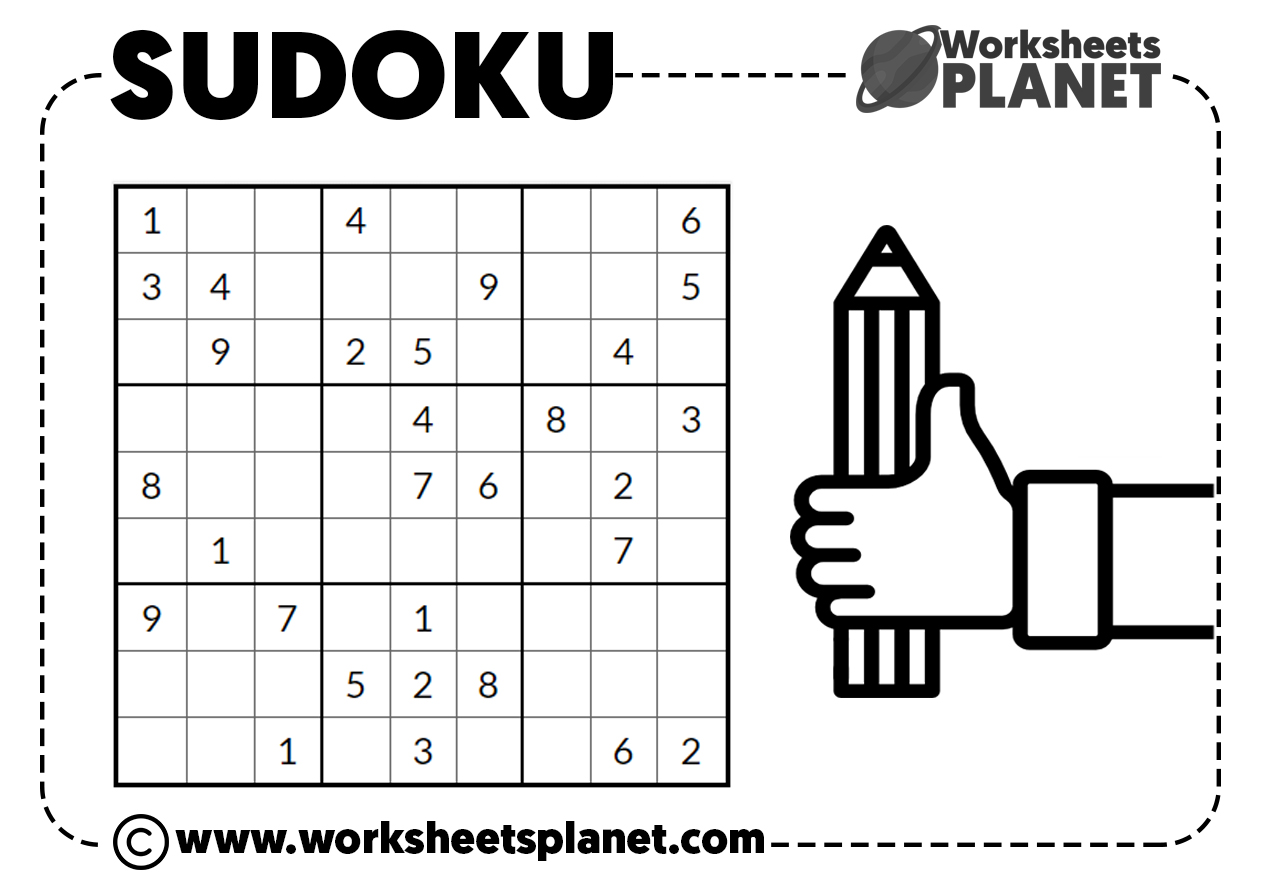

Each grid shares one 3×3 region with another grid.Ĭompetitive events, such as the Indian qualifiers for the World Sudoku Championships, have an interesting mix of variants that a solver must crack as fast as possible.
#SUDOKU RULES WINDOWS#
These regions resemble four windows in a frame, hence the name:Įxample of a windoku puzzle with shaded interior regions. The digits 1–9 must appear in the shaded regions only once. Windoku or Hyper Sudoku: Classic grid with 3×3 regions, but with four additional shaded 3×3 regions in the middle.Irregular sudoku: Classic grid, but instead of avoiding repeated digits in the 3×3 squares, you must avoid repeats in an irregularly marked outlined region.These numbers must be the result of applying a basic math operator (+ _ * /) between the digits on each side of the circle:Įxample of a sudoku variant with arithmetic pairs. Arithmetic Pairs Sudoku: A grid with small circled numbers given between some cells.The digits you place in the cage must add up to a small number shown in the cage’s corner. Killer Sudoku: A grid with smaller dotted ‘cages’ (segments) inside.Most modern-day sudoku is computer-generated, but enthusiast groups like Logic Masters India also make custom grids that have additional rules a solver must follow. But on this simple objective rests a great diversity of grids to play with. ‘Sudoku’ is short for suuji wa dokushin ni kagiru (“the numbers must remain single”). If all the numbers were replaced by letters or symbols, the gameplay would remain the same. Source: Tim Stellmach and (right) ‘User: Cburnett’/Wikimedia Commons.Ĭlassic sudoku doesn’t require any calculations while playing. Each grid’s difficulty depends on the number and position of its pre-filled cells: A classic 9×9 sudoku grid (left) with its solution.
#SUDOKU RULES FULL#
Sudoku, which gained popularity in the early 2000s, is a logic game where you fill the numbers 1-9 in a partially full 9×9 grid, with no repeating digits in any row, column, or smaller 3×3 region inside. To learn more about my progress on the “Medium” Sudoku puzzle, read the full post of Sudoku Episode 2 here and keep your eyes peeled for part 3 of our series.Prices start as low as Rs 2.5 per day How do you play sudoku? While it was not hard for me to solve it by hand, I struggled to understand why the engine had not been able to progress further. I then grabbed a pencil and solved it without too much difficulty, circling the right candidate in each unsolved cell. I stared at the half-solved puzzle for a long time. The picture below shows how far my initial implementation could go:įigure 1 Half-solved Medium Sudoku Puzzle Gould six years to develop his program to generate unique puzzles, I should probably get back to work if I intend to solve these puzzles any time soon.Īt the end of the previous episode, my attempt to solve a Medium-difficulty puzzle failed.

In the first blog of this series, I set myself the challenge of using the optimized inference engine, along with a few other advanced features of FICO® Blaze Advisor®, to solve Sudoku puzzles. Just to clear my mind from worldly things to do.
#SUDOKU RULES TV#
I put the tv off and disconnect the phone Sometimes late at night when I’m on my own And in 2006, a tribute song to Sudoku was nominated by the Japanese Embassy for an award. Gould six years to develop the program, but Sudoku’s rise in popularity was meteoric: by the summer of 2005, there was already a celebrity-studded TV show called “Sudoku Live” on British TV. Thankfully, it was later abbreviated to Sudoku.Ĭuriously, the game only really took off outside of Japan after Wayne Gould, a Hong Kong judge, developed a computer program to generate unique puzzles, which he then submitted to British and American newspapers in 2004. The name comes from Sūji wa dokushin ni kagiru, which roughly translates to “the digits must be single”. Although similar “Number Place” puzzles can be found in 19 th century French newspapers, it turns out Sudoku, as we all know and love, is actually a millennial. Sudoku, I assumed, must have been the Japanese equivalent, with some hidden moral about the perfect balance of all things in life. In one of the famous chess origin legends, a mathematician in India is credited for inventing the game and teaching the king a valuable moral lesson about the value of small things. I assumed it was an ancient Japanese tradition, probably created by a famous court mathematician in the middle ages to entertain a bored emperor. For those of you already caught up, keep reading for more…īefore developing my Sudoku addiction, I knew very little about the origins of Sudoku. In case you missed it, click here to catch up on part 1. This blog is the second post in our Sudoku Series.


 0 kommentar(er)
0 kommentar(er)
